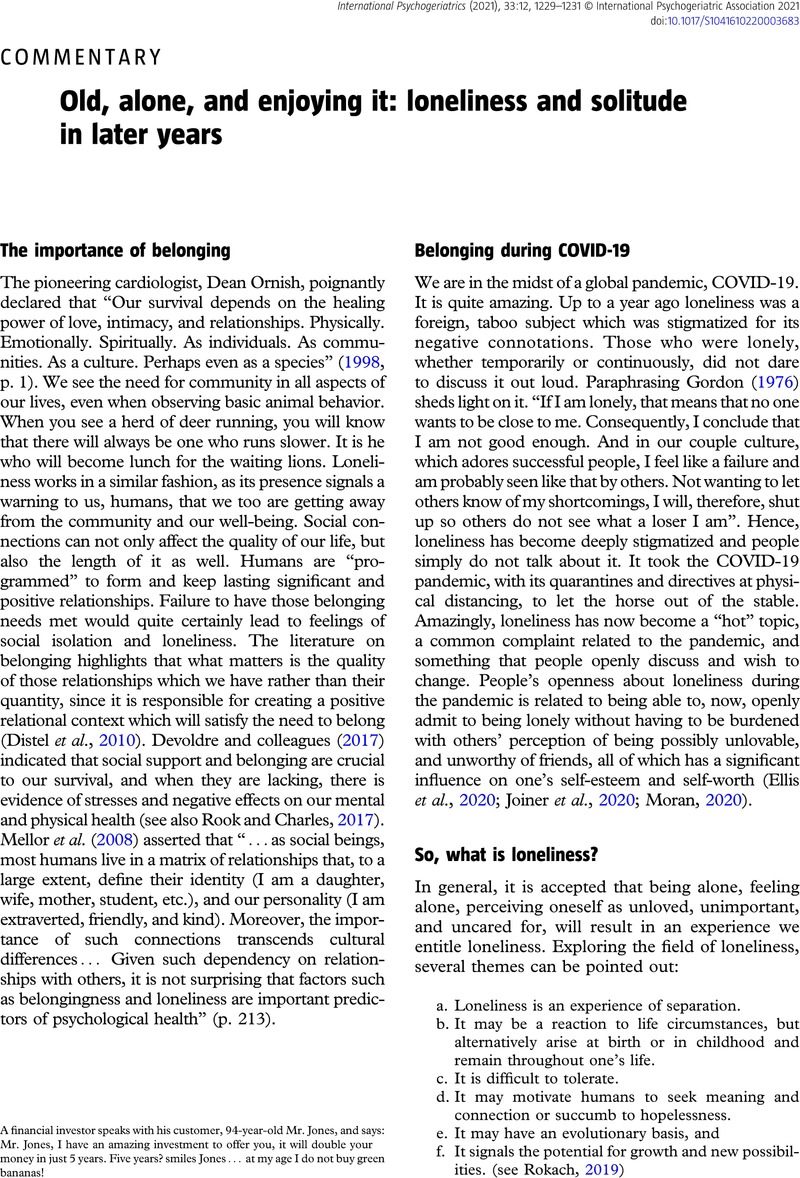No CrossRef data available.
Article contents
Old, alone, and enjoying it: loneliness and solitude in later years
Published online by Cambridge University Press: 17 December 2021
Abstract

- Type
- Commentary
- Information
- International Psychogeriatrics , Volume 33 , Special Issue 12: Issue Theme: Social Engagement and Mental Health , December 2021 , pp. 1229 - 1231
- Copyright
- © International Psychogeriatric Association 2021
Footnotes
A financial investor speaks with his customer, 94-year-old Mr. Jones, and says: Mr. Jones, I have an amazing investment to offer you, it will double your money in just 5 years. Five years? smiles Jones… at my age I do not buy green bananas!




